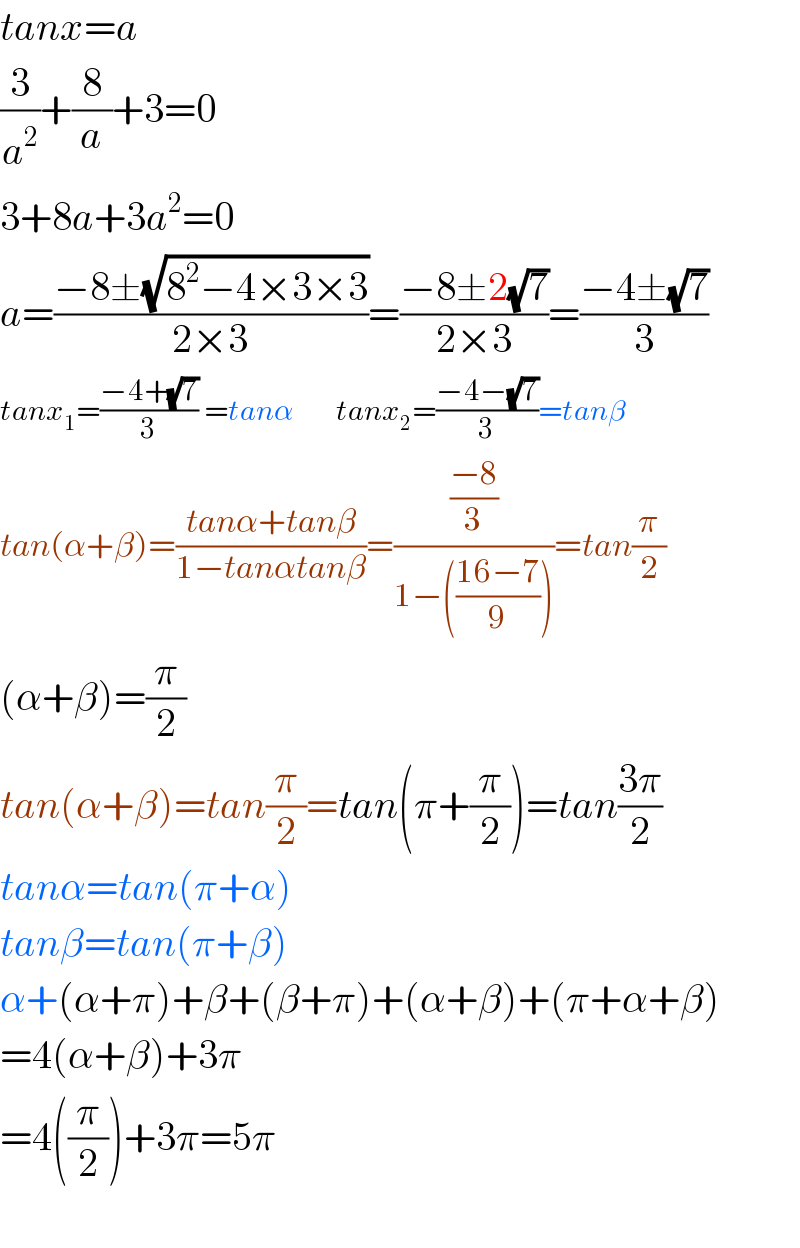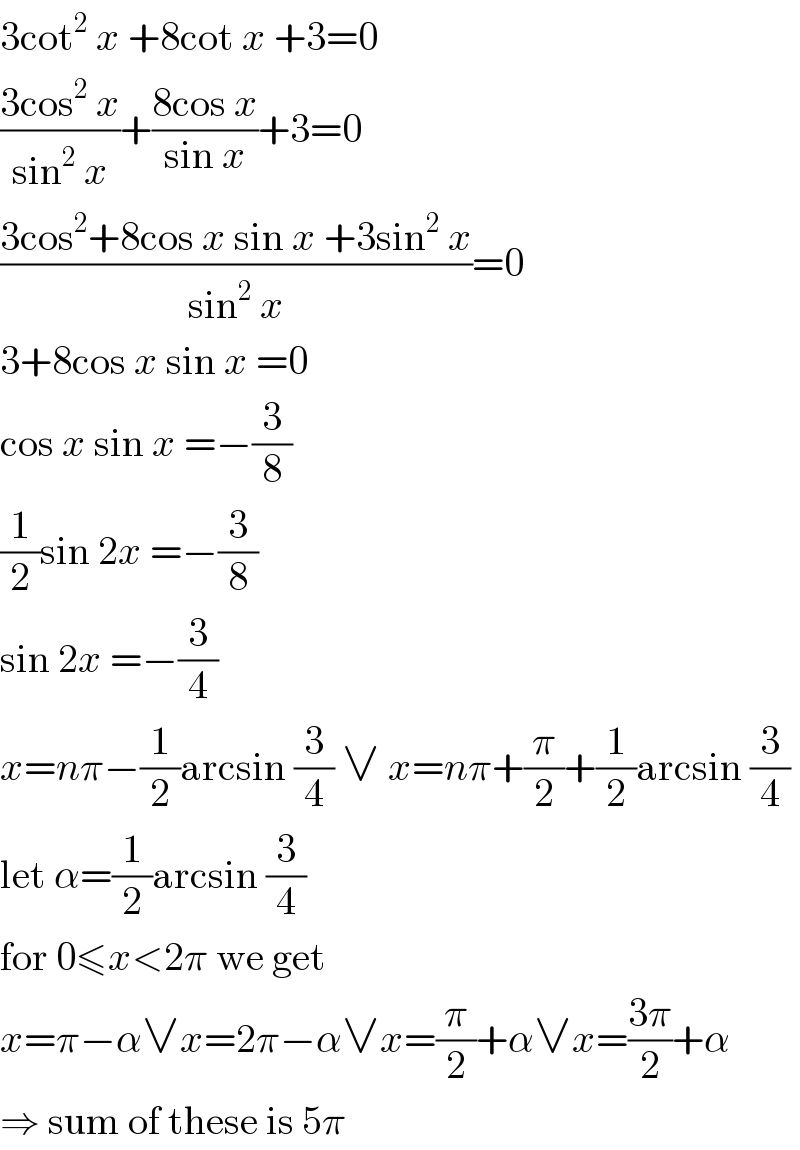
Question and Answers Forum
Question Number 119373 by bobhans last updated on 24/Oct/20
![Find all sum of all x interval [ 0, 2π ] such that 3cot^2 x + 8 cot x + 3 = 0](Q119373.png)
Commented by benjo_mathlover last updated on 24/Oct/20

Answered by TANMAY PANACEA last updated on 24/Oct/20

Commented by 1549442205PVT last updated on 24/Oct/20

Commented by TANMAY PANACEA last updated on 24/Oct/20

Answered by MJS_new last updated on 24/Oct/20

Answered by 1549442205PVT last updated on 24/Oct/20
![3cot^2 x + 8 cot x + 3 = 0 Δ′=4^2 −9=7⇒cotx=((−4±(√7))/3) ⇒tanx=(3/(−4±(√7)))=((3(−4∓(√7)))/9)=((−4∓(√7))/3) Put α=tan^(−1) (((−4+(√7))/3)),β=tan^(−1) (((−4−(√7))/3)) α≈−24°17′42”,β≈−65°42′17” Since α,β∈[0,2π] and tanx=tan(x+kπ) we get α∈{155°42′17”,335°42′17”} β∈{114°17′43”,294°17′43”} ⇒α_1 +α_2 +β_1 +β_2 =900° Thus,Sum of all the angles satisfying given equation equal to 900°](Q119435.png)
Answered by Bird last updated on 24/Oct/20

